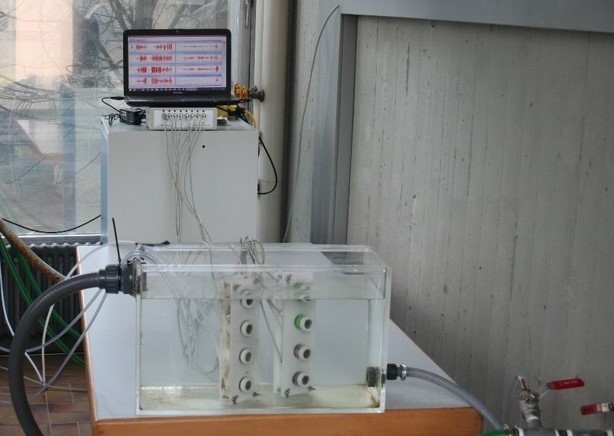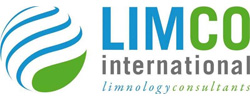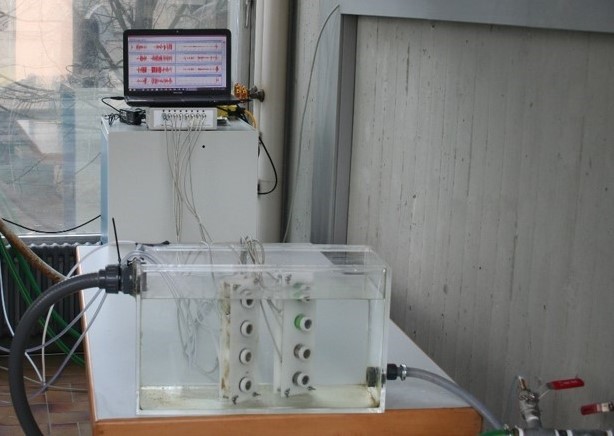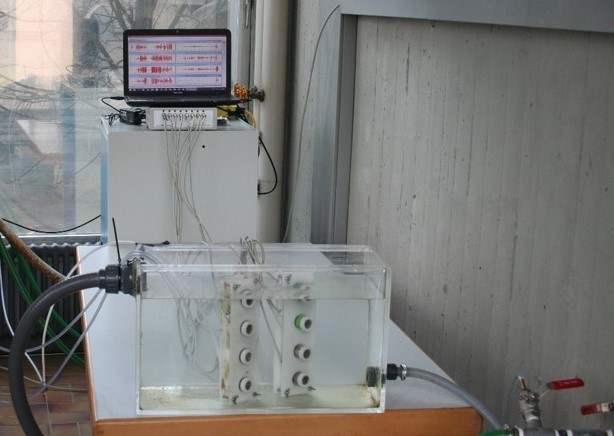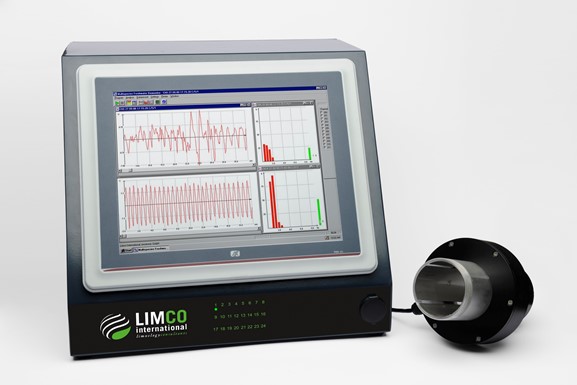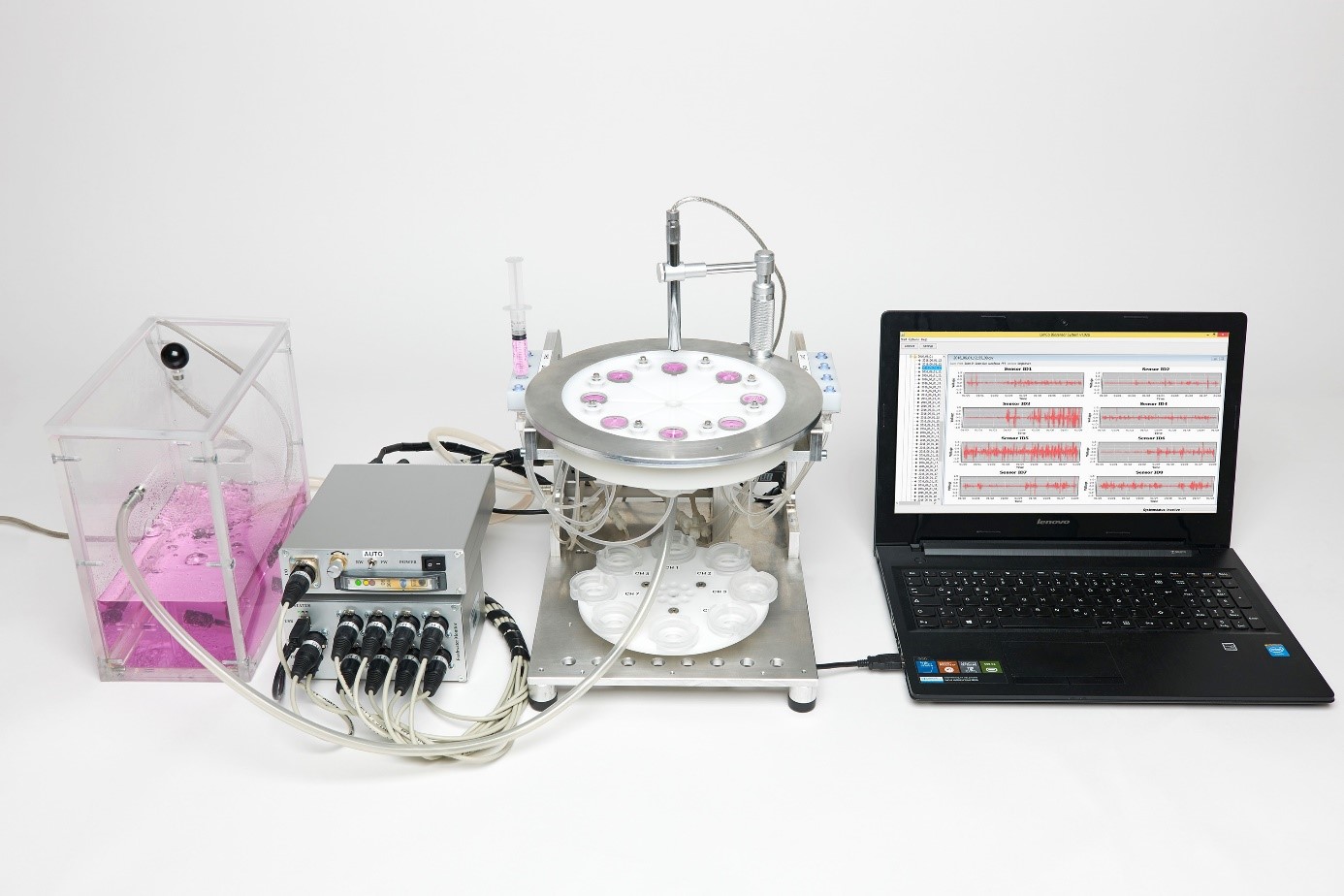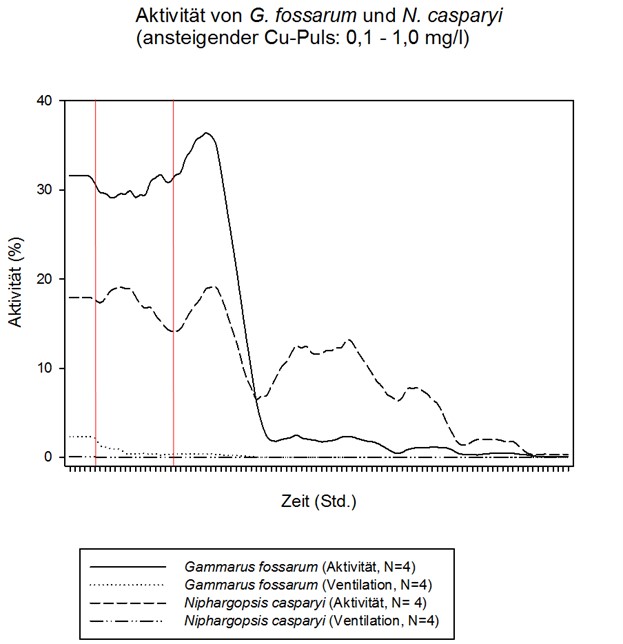The system allows real-time monitoring of groundwater quality with groundwater invertebrates as “pre-taster” for early warning of toxic pulses (e.g. Nitrate, Nitrite, antibiotics) due to rainfall events for instance.
The groundwater biomonitor can be operated with surface water (e.g. Gammarus spp.) or groundwater (e.g. Niphargus spp.) crustaceans to continuously monitor the water quality in both laboratory and in situ.
Groundwater organisms reacted with changes in their behaviour when being exposed to different chemicals in the groundwater biomonitor.
An autosampler linked to the groundwater biomonitor can take event-related water samples for subsequent detailed chemical diagnostics.
Groundwater crustaceans can survive long times in the biomonitor, as they are adapted to darkness, low oxygen conditions and low nutrient concentrations due to their slow metabolism and long life-span.
This fact reduces the maintenance effort and allows for recording chronic long-term effects of chemicals. Groundwater crustaceans can easily be stored in a standard refrigerator for long periods.
The groundwater biomonitor can be used to protect both drinking water safety for human beings and groundwater ecosystem health.

